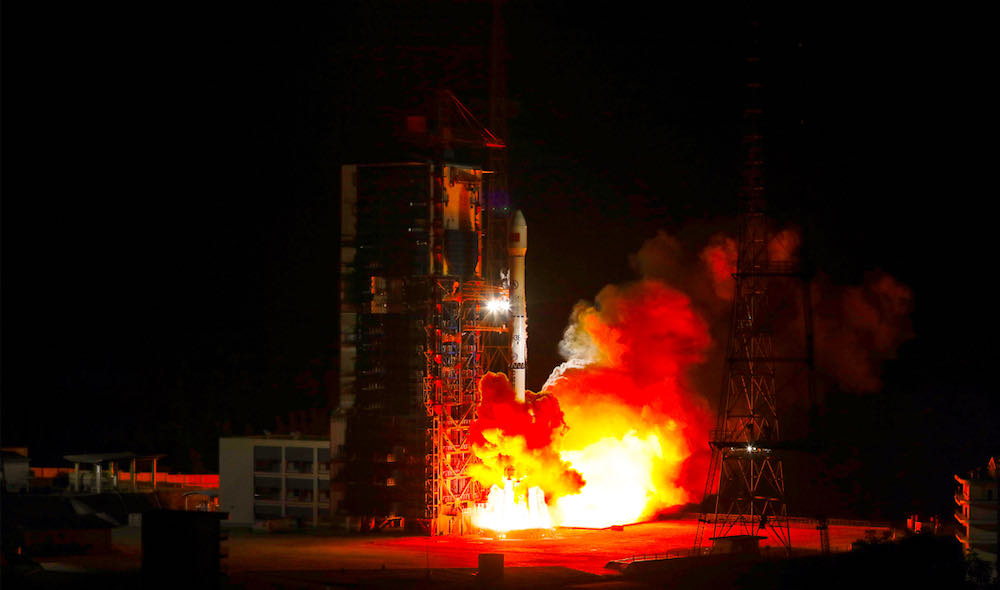
China launched another military satellite Tuesday aboard a Long March 3B rocket, just four hours after liftoff of a different Chinese launcher with multiple prototype spacecraft for a planned constellation of orbiting internet relay nodes.
The TJS 7 satellite launched at 1541 GMT (11:41 a.m. EDT) Tuesday from the Xichang space center, a spaceport nestled amid a hilly region of Sichuan province in southwestern China.
The launch aboard a Long March 3B rocket, which occurred at 11:41 p.m. Beijing time, was the second Chinese space mission to ascend into orbit Tuesday. Earlier in the day, a Long March 2C rocket launched from the Jiuquan space center in northwestern China with a group of test satellites for a Chinese space-based broadband network.
The TJS 7 satellite rode its 184-foot-tall (56-meter) Long March 3B launcher into an elongated geostationary transfer orbit with a perigee, or low point, of 122 miles (197 kilometers) and an apogee, or high point, of 22,255 miles (35,816 kilometers). The rocket’s cryogenic upper stage deployed the TJS 7 spacecraft into an orbit inclined 28.5 degrees to the equator, according to U.S. military tracking data.
The satellite is expected to use its own propulsion system to circularize its orbit more than 22,000 miles over the equator in the next few weeks. In geostationary orbit, the TJS 7 satellite’s velocity will match the rate of Earth’s rotation, giving the spacecraft the ability to remain over a fixed geographic position.
The China Aerospace Science and Technology Corp., or CASC, the government-run contractor that oversees the Chinese space program, said the TJS 7 satellite will be “mainly used to carry out communication technology test missions.”
But that is likely a cover for a clandestine military mission. Analysts believe the TJS series of satellites actually serve the Chinese military, providing early warning and intelligence-gathering functions.
CASC said the TJS 7 satellite was developed by subsidiary organization called the Shanghai Academy of Spaceflight Technology. That could indicate the TJS 7 spacecraft carries infrared sensors to collect data on foreign missile launches for the Chinese military, according to Jonathan McDowell, an astronomer at the Harvard-Smithsonian Center for Astrophysics and an expert in spaceflight activity.
Email the author.
Follow Stephen Clark on Twitter: @StephenClark1.
